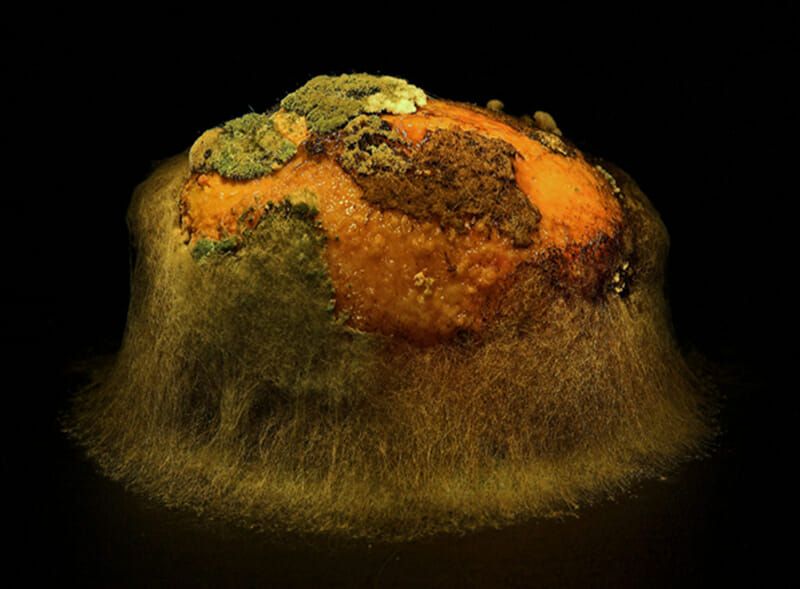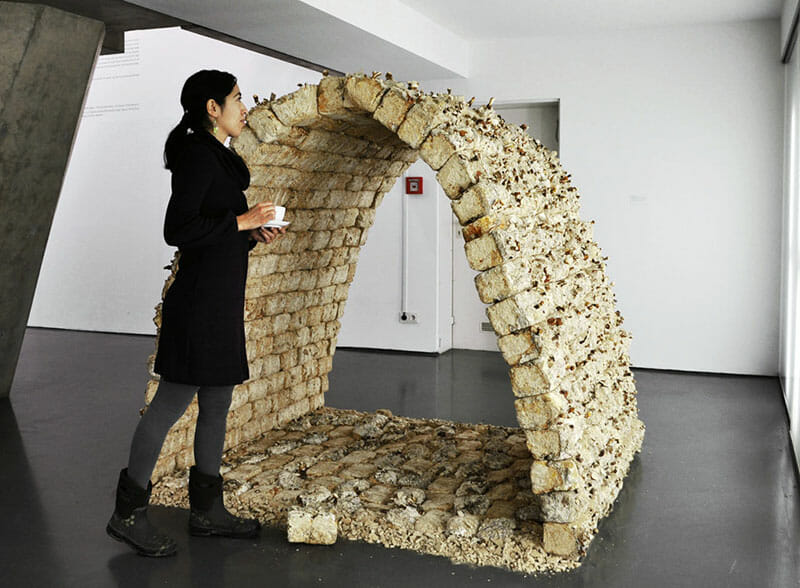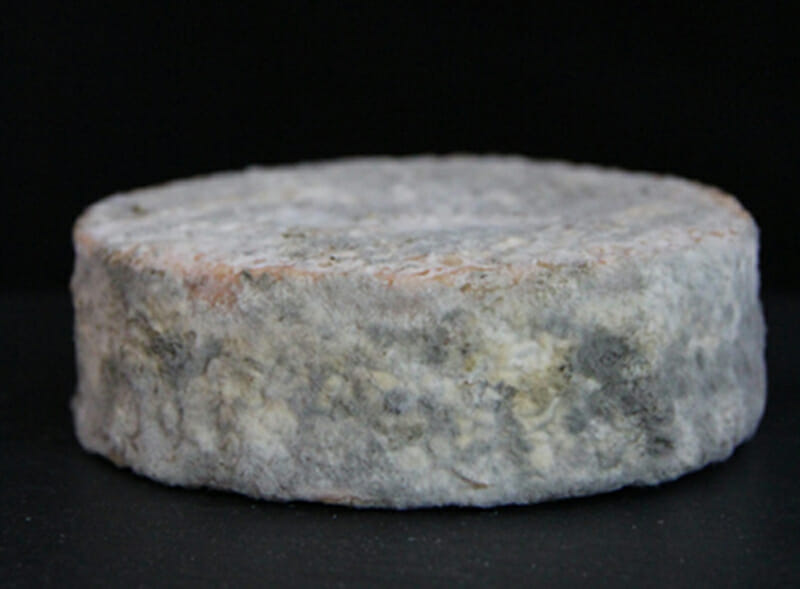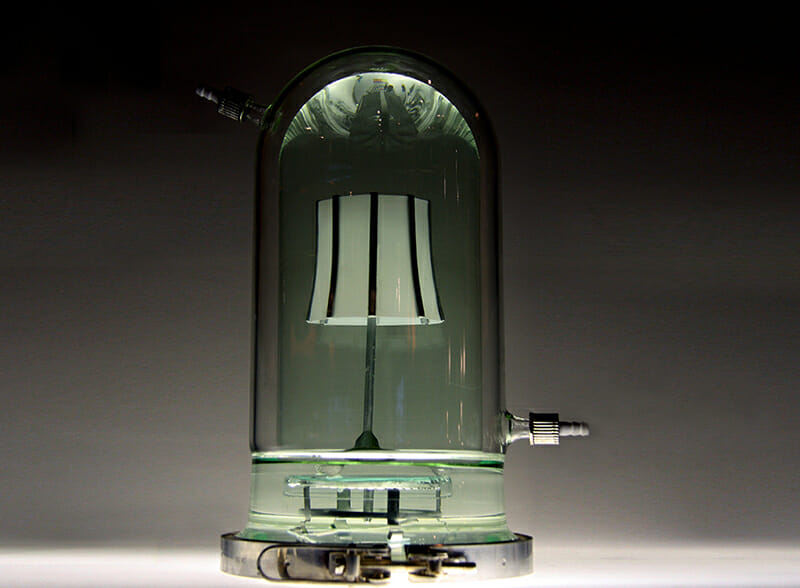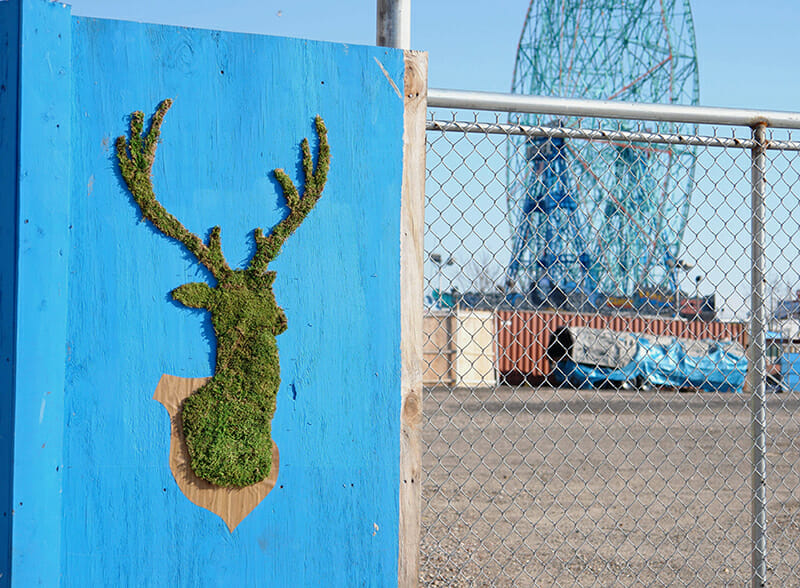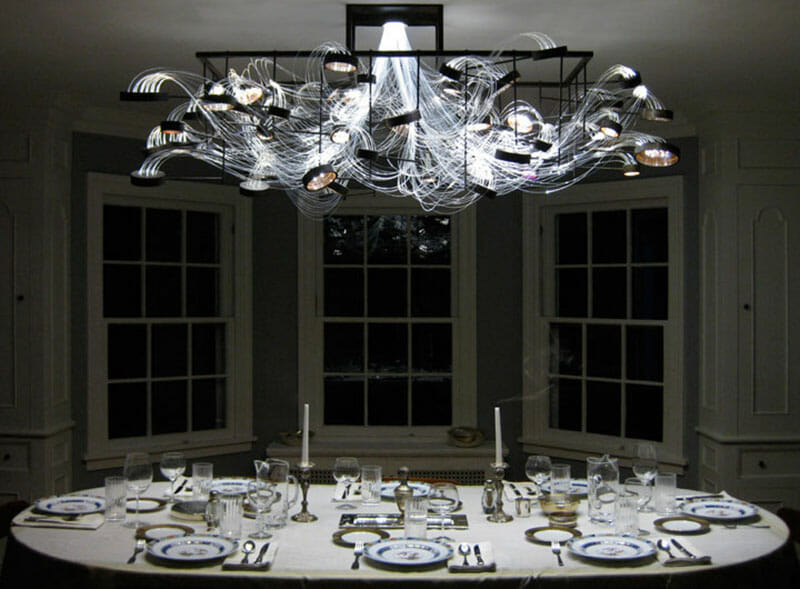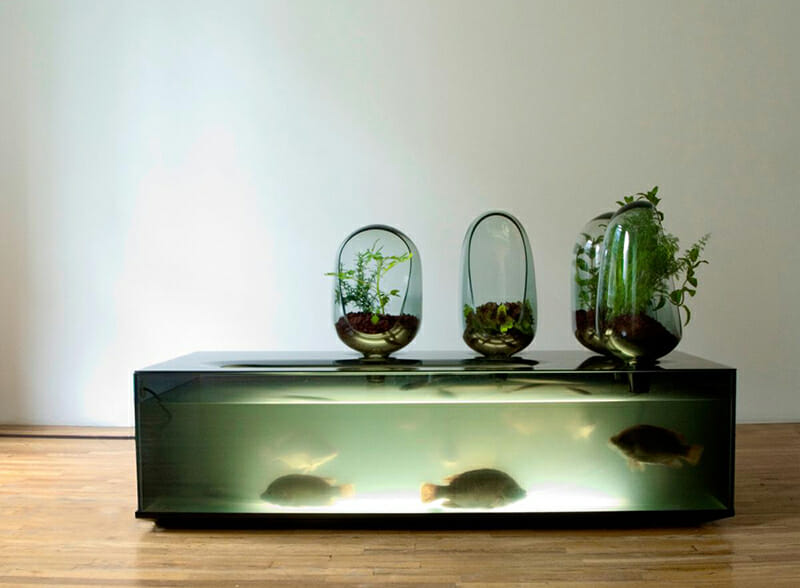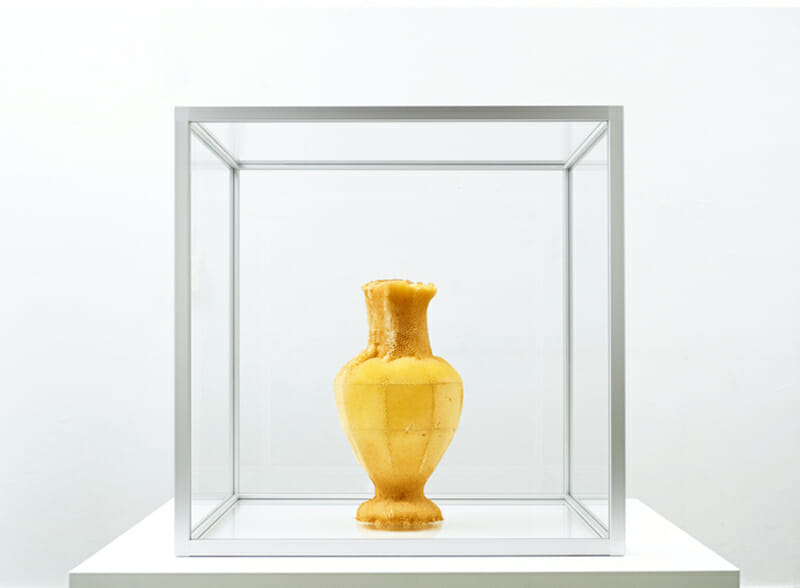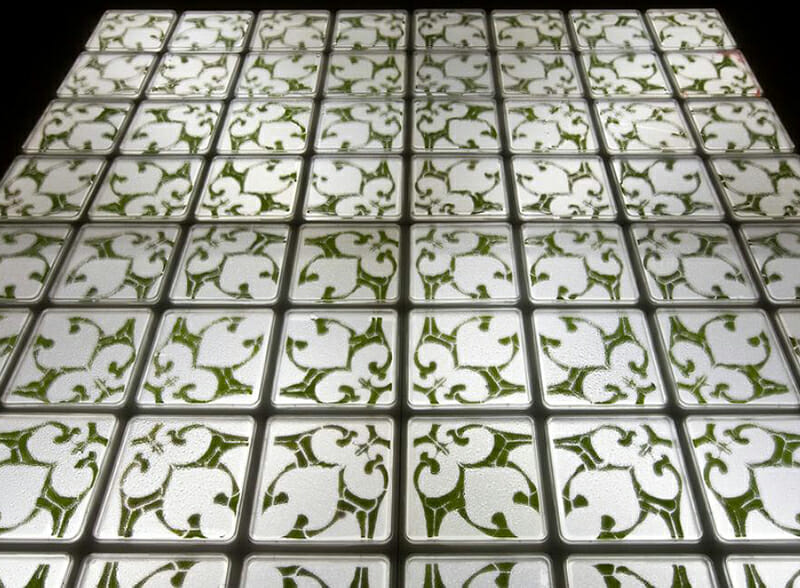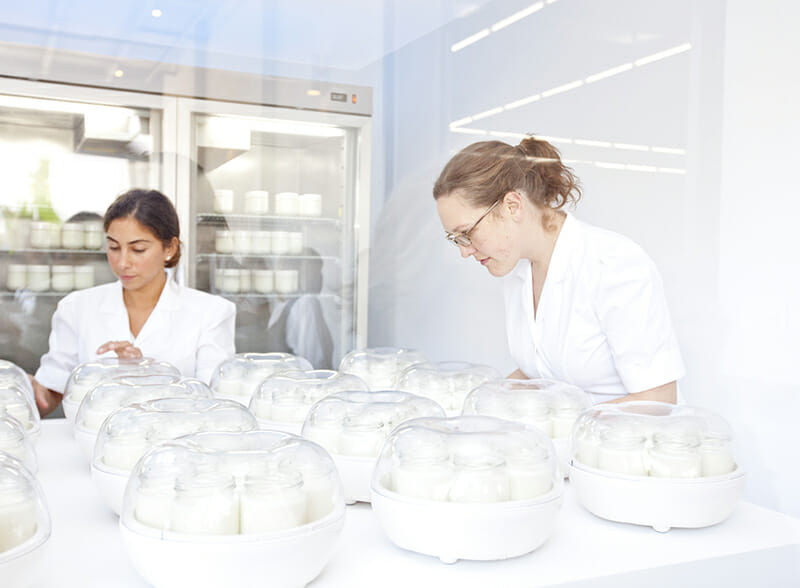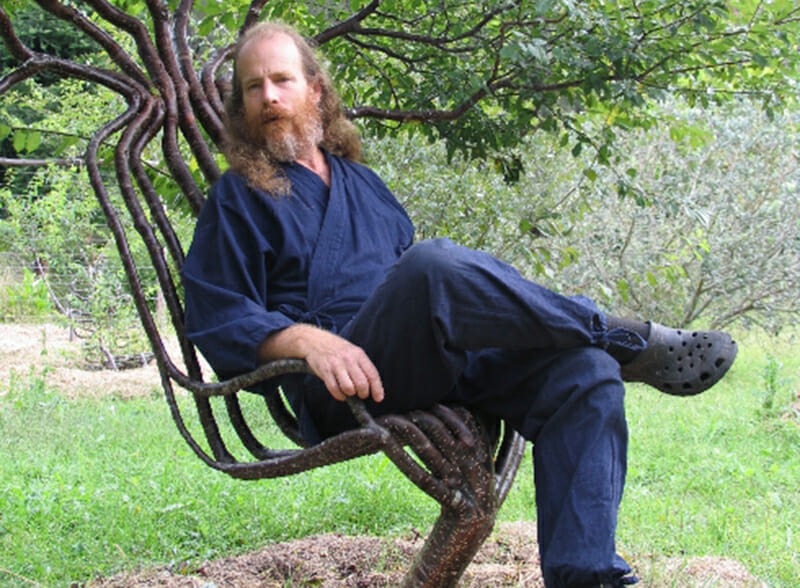Art is life and life is art for a rising class of artists who use living things as their medium.
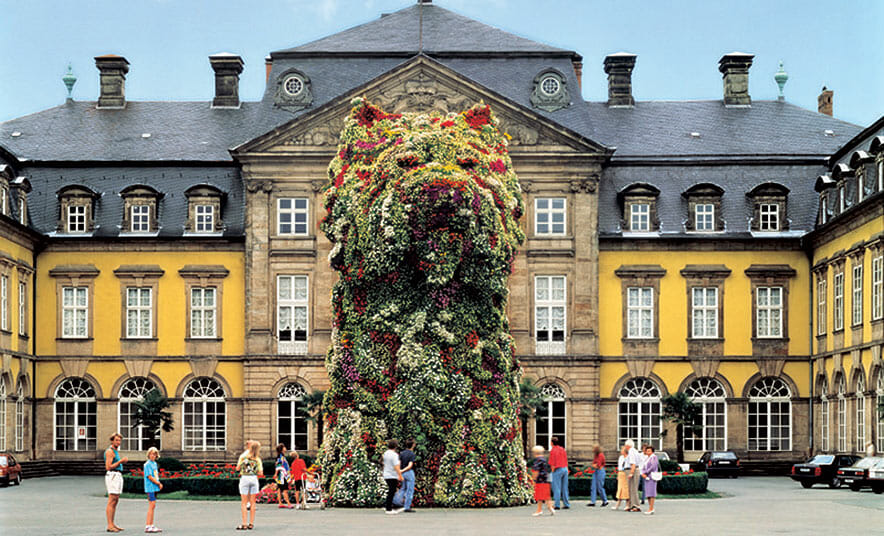
[mf_h5 align=”left” transform=”uppercase”]1. Heikki Leis[/mf_h5]
[mf_h5 align=”left” transform=”uppercase”]Potato Mold (2012) [/mf_h5]
Various molds and potato
For most, a moldy potato found in the lost corner of the refrigerator causes a sprint to the trash can. But just such a rotten spud inspired Estonian artist Heikki Leis to let various fruits and vegetables decay for months before photographing the results for his “Afterlife“series. While the photos are not appetizing, they will mesmerize.
[mf_h5 align=”left” transform=”uppercase”]2. Philip Ross [/mf_h5]
[mf_h5 align=”left” transform=”uppercase”]Mycotecture Alpha (2009) [/mf_h5]
Custom grown mushroom blocks
About time we had a room made of mushrooms. Artist Philip Ross made the building blocks for “Mycotecture Alpha” from mushrooms and pasteurized wood chips. The combination works like a biological version of concrete, assuming the shape of any mold. As Ross hopes to eventually build an entire house out of fungal bricks, Ecovative Design is already molding packaging and insulation with the help of fungus.
[mf_h5 align=”left” transform=”uppercase”]3. Christina Agapakis and Sissel Tolaas [/mf_h5]
[mf_h5 align=”left” transform=”uppercase”]Selfmade Installation (2013) [/mf_h5]
Dairy products and human bacteria
Need help making a fresh batch of cheese? Look no further than the little buddies between your toes. For a synthetic biology exhibit at The Science Gallery at Trinity College Dublin, Christina Agapakis and Professor Sissel Tolaas sampled bacteria from mouths, navels, toes and tears to coagulate milk into a set of 11 unique cheeses which visitors are welcome to smell (but not taste).
[mf_h5 align=”left” transform=”uppercase”]4. Joris Laarman Labs [/mf_h5]
[mf_h5 align=”left” transform=”uppercase”] Half Life Lamp (201o) [/mf_h5]
Mouse cells, firefly DNA, metal, glass
Gas lamps in 1870, incandescent lights in the 1880s, florescent bulbs in the 1920s, LEDs in 2013 and living luminescent cells in 2050? Joris Laarman Labs already has a working model, but hopes the project only gets us thinking about the possibility of living appliances. A layer of hamster cells spliced with firefly DNA on the lamp shade to produce a bio-luminescent enzyme. Don’t worry, no hamsters were harmed in the process. Laarman modified embriotic hamster cells that scientists have kept alive for over 50 years.
[mf_h5 align=”left” transform=”uppercase”]5.Edina Tokodi [/mf_h5]
[mf_h5 align=”left” transform=”uppercase”] Coney Island Deer Trophy (2008) [/mf_h5]
Moss on urban wall
Bansky has some living competition. Edina Tokodi’s installations are basically graffiti, but instead of using paint, the artists tames moss and plants into certain shapes that live on outdoor walls in New York City. She hopes bringing some green to a concrete jungle will get city dwellers thinking about their connection to nature.
[mf_h5 align=”left” transform=”uppercase”]6. MADLAB Architects[/mf_h5]
[mf_h5 align=”left” transform=”uppercase”] Bacterioptica (2000) [/mf_h5]
Bacteria, Petri dishes and fiber optics
The chandelier is alive! But so are the millions of microbes clinging to every surface in the American home. The Bacterioptica chandelier literally highlights a house’s microscopic ecosystem by channeling light into Petri dishes with fiber optic cables. The quality of the light changes as the bacteria grows and evolves.
[mf_h5 align=”left” transform=”uppercase”]7. Mathieu Lehanneur[/mf_h5]
[mf_h5 align=”left” transform=”uppercase”] Local River (2008) [/mf_h5]
Fish, plants, glass, water pump and joints
You can’t get much more local than fish and greens grown in your own living room. Picking up on a method used at innovative talapia farms, Local River combines fish farming with hydroponics. As plants extract nutrients from nitrogen-rich fish poop, they also balance the chemistry of the fish tank, creating a productive eco-system for the benefit of the kitchen table.
[mf_h5 align=”left” transform=”uppercase”]8. TomÁ¡Š¡ LibertÁny[/mf_h5]
[mf_h5 align=”left” transform=”uppercase”] Vessel #3 (2011) [/mf_h5]
Beeswax, glass and aluminum
While we already covered the amazing work LibertÁny did for the London Olympics, he must be mentioned in any list of living art. LibertÁny sculpts with the help of bees. The artist invites a colony to build honeycomb structures over shapes he designs. He hopes the results get people thinking about the risks of colony collapse disorder around the world.
[mf_h5 align=”left” transform=”uppercase”]9. Allison Kudla[/mf_h5]
[mf_h5 align=”left” transform=”uppercase”] Growth Pattern (2010) [/mf_h5]
Cut tobacco leaves in solution
To make the piece, Kudla arranged pieces of dry-cut tobacco leaves into symmetrical pattern in a set of tilled Petri dishes containing a solution that promotes plant growth. Over time, the tiles shift from identical arabesques to unique examples of growth and decay — a process Kudla managed to document in this mesmerizing video.
[mf_h5 align=”left” transform=”uppercase”]10. Jennifer Rubell[/mf_h5]
[mf_h5 align=”left” transform=”uppercase”] Incubation (2011) [/mf_h5]
Yogurt, honey, nurses and hungry people
Incubation involves two nurses making yogurt in space designed to look like a hospital nursery. Every few minutes, they deliver some yogurt to viewers outside who could then sweeten their meal under a drizzle of honey. Rebell hopes the piece helped people think about the patience involved with creativity and, when the time comes, enjoy a cup of delicious yogurt.
[mf_h5 align=”left” transform=”uppercase”]11. Peter Cook[/mf_h5]
[mf_h5 align=”left” transform=”uppercase”]Pooktre Chair (2005)[/mf_h5]
Trained tree
Peter Cook is a master of tree shaping. His chairs take seven to eight years of careful attention and shaping, but the results are the perfect resting place for the tired gardener. His other trained creations include coffee tables, tree people and mirror frames, all of which can be viewed on the Pooktre website.
[mf_h5 align=”left” transform=”uppercase”]12. Jeff Koons [/mf_h5]
[mf_h5 align=”left” transform=”uppercase”] Puppy (1992) [/mf_h5]
Steel and flowers
Just this month, Koon’s Balloon Dog earned the title of most expensive piece of art by a living artist when it sold at auction for $58.4 million. Koon is just as well known for Puppy, a 43-foot topiary sculpture of a West-highland White Terrier covered in a variety of colored flowers. The decked-out dog greets visitors to the Guggenheim Museum in Bilboa.
